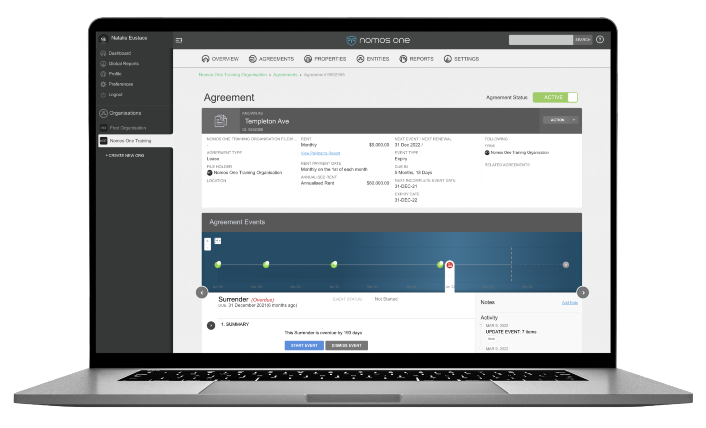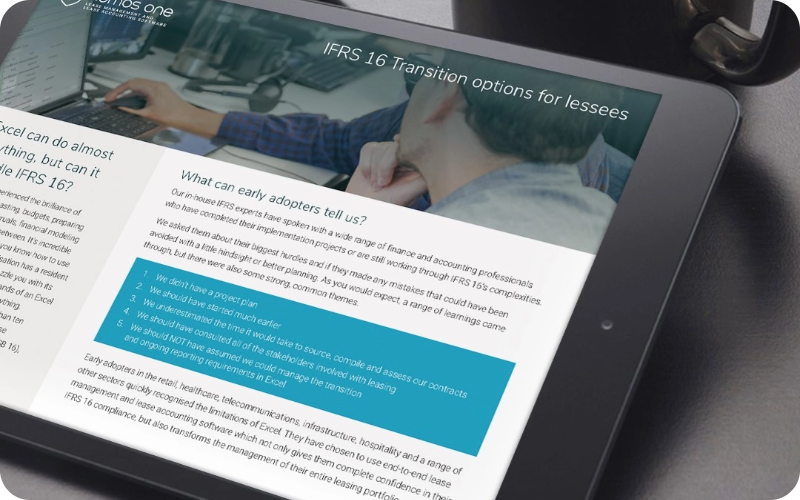IFRS 16 is complicated. When it comes time to review your balance sheet and profit and loss accounts at the end of the reporting period, it can be challenging to get an intuitive feel for how these numbers are made up. This isn’t surprising, as up to 50 different components can be included in an individual lease agreement calculation, and this is before we start accounting for any changes to this information.
That’s why we have put together the three most important reasons your team needs to include the Daily Calculation Report (DCR) as part of your Nomos One lease accounting toolkit.
Getting to grips with the detail
The DCR uses the language of accountants to establish precisely how each balance sheet and profit and loss account is calculated over every day of the lease. This spreadsheet uses formulas & cell referencing to give the entire financial model of the lease for the information currently entered through the agreement.
This allows users to get in behind the numbers and see how their balance sheet accounts are calculated at a time that otherwise would be a number on a screen.
Understanding the payment series (the bread & butter of lease accounting)
If you want to understand something, first you need to understand its underlying mechanics.
The mechanics of lease accounting all come down to the payment series. The payment series is the projected lease payments extending over the expected life of the lease, and these payments are then discounted back to reflect the lease liability.
As the payment series extends into the future, assumptions have to be made around what the rent might be when there are lease events such as CPI rent reviews, market rent reviews etc. New information is added to the model as the future becomes the present. Adjustments are made to the payment series to reflect the actual rent amounts agreed upon following the market rent review (for example).
The DCR has a tab showing all of the different payment series that have been active at various points during a lease’s life. This allows a user to quickly check changes made to the payment series and review that the current payment series makes sense.

IFRS 16 is a complicated lease accounting standard. When reviewing your balance sheet and profit and loss accounts at the end of the reporting period, it can be challenging to get an intuitive feel for how these numbers are made up. This isn’t surprising, as up to 50 different components can be included in an individual lease agreement calculation, and this is before we start accounting for any changes to this information.
That’s why we have compiled the three most important reasons your team needs to include the Daily Calculation Report (DCR) as part of your Nomos One lease accounting toolkit.
Getting to grips with the detail
Our Calculation Report uses the language of accountants to establish precisely how each balance sheet and profit and loss account is calculated every day of the lease. This spreadsheet uses formulas and cell referencing to give the entire financial model of the lease for the information currently entered through the agreement.
This allows lease accounting software users to get in behind the numbers and see how their balance sheet accounts are calculated at a time that otherwise would be a number on a screen.
Understanding the payment series (the bread & butter of lease accounting)
If you want to understand something, first, you need to understand its underlying mechanics.
The mechanics of lease accounting all come down to the payment series. The payment series is the projected lease payments extending over the expected life of the lease, and these payments are then discounted back to reflect the lease liability.
As the payment series extends into the future, assumptions have to be made around what the rent might be when there are lease events such as CPI rent reviews, market rent reviews and more. New information is added to the model as the future becomes the present. Adjustments are made to the payment series to reflect the actual rent amounts agreed upon following the market rent review (for example).
The Calculation Report has a tab showing all the different payment series active at various points during a lease’s life. This allows a user to quickly check the payment series's changes and review whether the current payment series makes sense.

Demystifying changes and diagnosing problems
The Calculation Report is excellent for reviewing any adjustments made over the reporting period and investigating anything peculiar.
Again, the “payments” tab can be reviewed to establish the exact date that an adjustment is made and that the change in the lease term, changes in rent payments or other assumptions made have been correctly reflected in the payment series.
In conclusion, incorporating the Daily Calculation Report (DCR) into your lease accounting toolkit provided by Nomos One will help you better understand the underlying factors contributing to the figures on your balance sheet and profit and loss statements at the end of the reporting period.

























